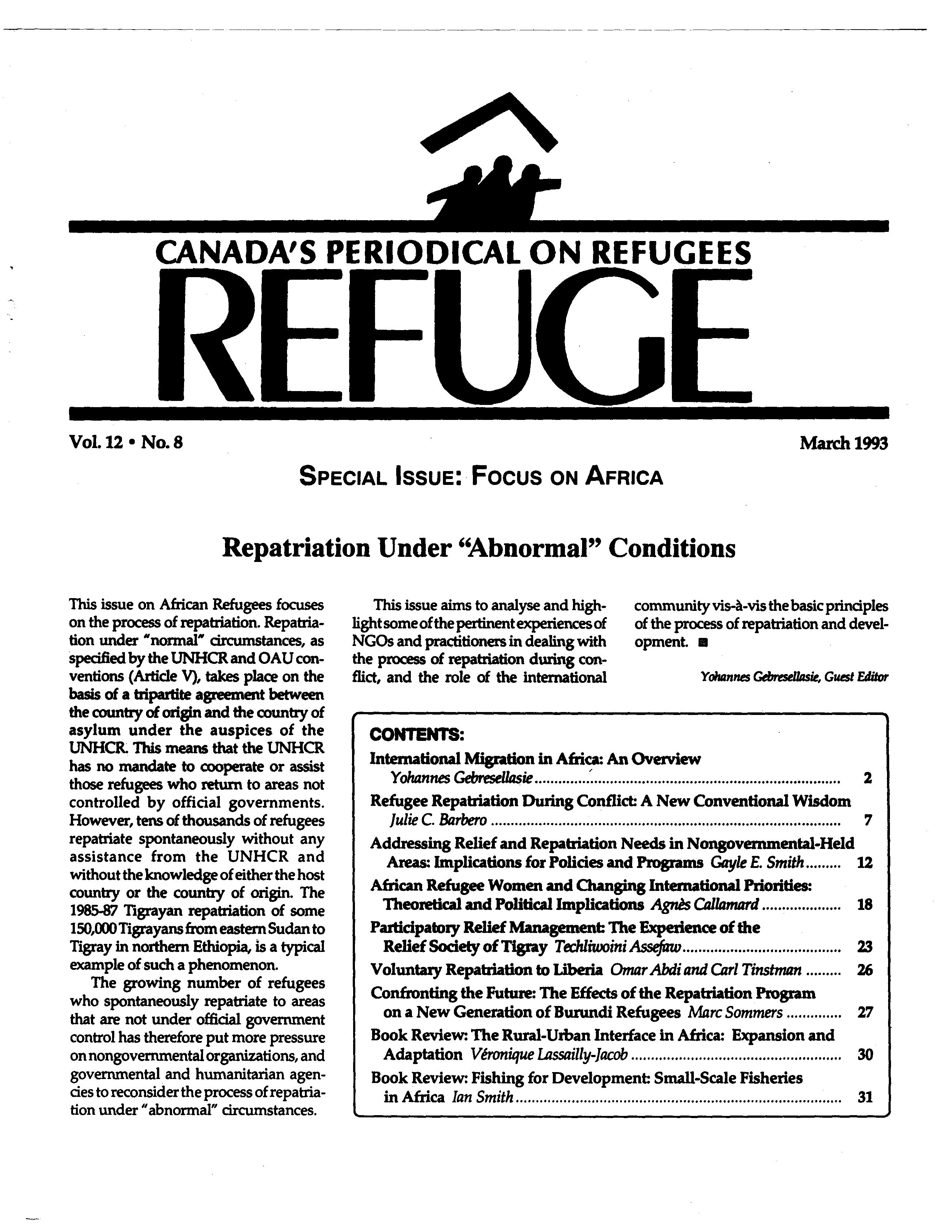Addressing Relief and Repatriation Needs in Nongovernment-Held Areas: Implications for Policies and Programs
DOI :
https://doi.org/10.25071/1920-7336.21703Mots-clés :
relief, repatriation, policies, UN, Ethiopia, UNHCR, NGOsRésumé
This paper will examine the existing constraints to addressing relief and repatriation needs in nongovernment-held areas and point to areas of possible change. Nongovernment-held areas are held by a force other than a central government army. In the case of Tigray, these areas were not only inaccessible to the army of the former central government of Ethiopia (GOE), but were also administered by an opposition force, theTigrayan People's Liberation Front (TPLF). Relative to other national liberation movements, the TPLF's administrative system was quite developed; in addition, the movement controlled a wide area encompassing most of rural Tigray and, by 1988, the whole of the region. Effective access was maintained from neighbouring Sudan, and the Relief Society of Tigray (REST) operated as an effective disaster management agency.Statistiques
Téléchargements
Publié-e
Comment citer
Numéro
Rubrique
Licence
© Gayle E. Smith 1993

Cette œuvre est sous licence Creative Commons Attribution - Pas d'Utilisation Commerciale 4.0 International.
Les auteurs qui publient dans Refuge conservent le droit d’auteur associé à leur œuvre, et octroient au public une licence Creative Commons Attribution - Utilisation non commerciale 4.0 International. La licence permet l’utilisation, la reproduction et l’adaptation du matériel avec attribution par tous moyens et sous tous formats pour des fins non commerciales. Pour des informations générales sur les licences Creative Commons, visitez le site Creative Commons. Pour la licence CC BY-NC 4.0, consultez le résumé lisible par l'homme.







